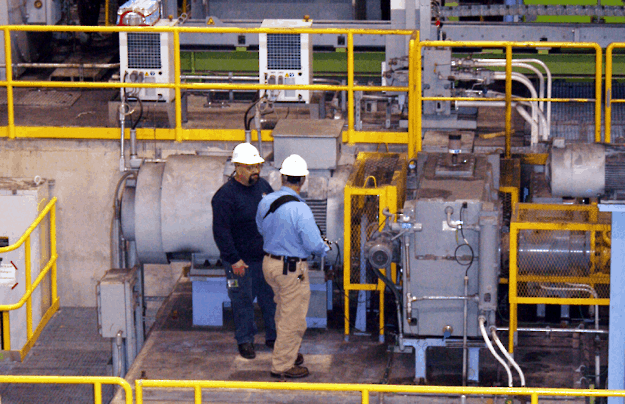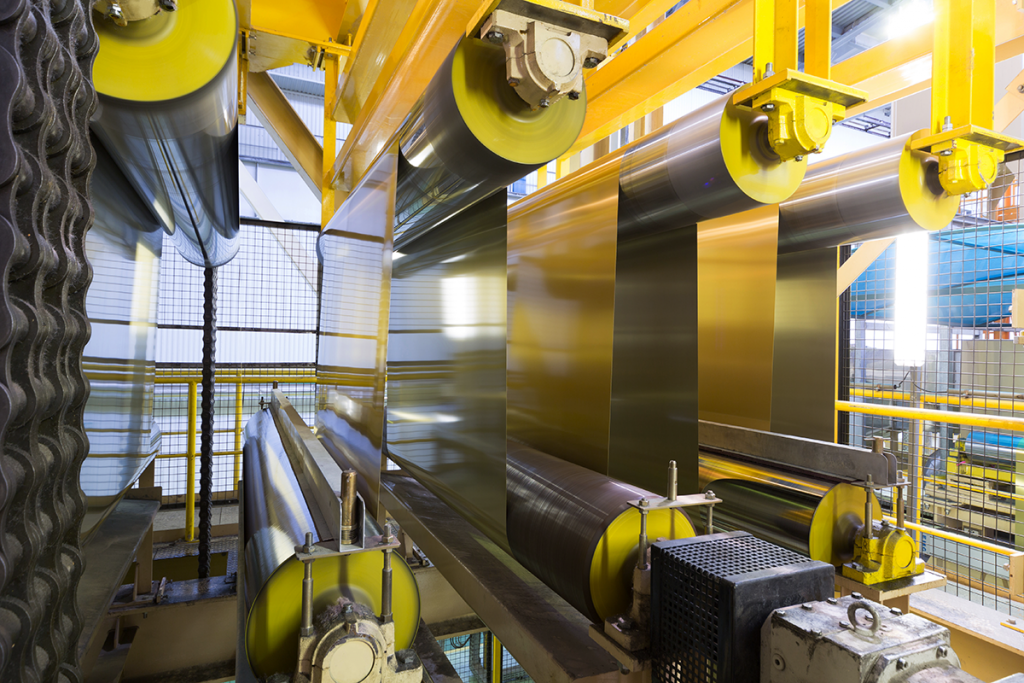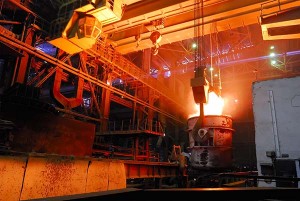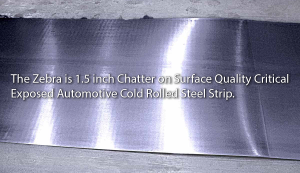After years of decline due to economic conditions, the outlook for steel around the world is starting to look more positive. This is especially true for US steel producers as government officials discuss reforms to not only lower the corporate tax rate but also control the glut of imports from overseas markets which has been so problematic in recent years. Current infrastructure improvement plans have the potential to provide additional markets for those mills that are able to meet the demand. This will also increase their profits but is contingent on their ability to produce a quality product at a lower cost of manufacturing. For this reason, plants will need to pay extra attention to their asset reliability to ensure that they can meet the commitments of their customers and guarantee their ability to capitalize on the upswing in demand.
Steel Manufacturing Has Long Known the Benefits of Condition Monitoring (CM).

- Condition monitoring is the utilization of the actual operating condition of a mechanical or electrical asset to determine its current state of reliability
- By focusing efforts on results of condition monitoring inspections, it allows for a much more efficient and effective use of time during scheduled outages
- Advancements in technology and an increased focus on how best to accurately identify the most common failure modes in non-standard condition monitoring assets such as production cranes and turret bearing applications, allow mills to operate with confidence that they can meet future demand

While CM programs may have waned or been totally ignored during the recession, maintenance and reliability operations (MRO) have in recent years begun to ramp up their condition monitoring efforts. According to an article by Skilled Welding, plants have been investing in technology, people and training focusing on the traditional application of condition monitoring techniques to their critical asset base such as pumps, fans, drives, and gearboxes. Unfortunately, some of the most critical assets such as production cranes and extremely large turret bearings go un-monitored due to the complexity, inaccessibility, or even the lack of internal knowledge on how best to identify problems. For this reason, these critical assets become a huge risk and have the potential to grind mill production to a halt.
Check the Custom Metal Fabrication process to get an insight into the efforts that go into metal fabrication.
Condition Monitoring is also a key tool for addressing quality issues particularly for critical finish rolling mill applications like exposed automotive product. Early recognition of “quality” defects on flat product and identifying the source allow the mill to take corrective actions and minimize the impact to production, or stop production if necessary to ensure that inferior product is not shipped to the end user.

Cranes are also particularly challenging since they are almost always critical and very rarely spared. Accessibility, load, and speed variations make it difficult to capture usable vibration analysis data with standard route-based data collection devices. Also, safety constraints typically prohibit personnel from “riding” cranes during normal operations for obvious reasons. Very often the limited run time on slow speed components may not be sufficient to acquire the necessary data due to the short duration of events such as trolley movements and hoist operations. By utilizing transient vibration data acquisition and tying in available process information, an accurate representation of the crane’s operating condition can still be made. Each and every situation may be unique and deciding which method to use is the first thing that an analyst needs to consider when asked to perform this type of testing.

Very large and extremely critical turret (or slewing) bearings typically found on electric arc furnaces (EAF) and castor applications have often been ignored by condition monitoring analysts due to a variety of reasons including accessibility and not having the proper equipment to capture the data. Mills have normally relied on “tilt tests” and grease analysis to provide some indication of bearing condition, however, these tests are typically few and far between. By understanding the most common failure modes of these critical bearings, vibration analysts can pre-wire the appropriate sensors, capture plant process information and build their condition monitoring database to accurately identify these defects. By having an accurate estimation of the bearing’s condition, it allows mills to plan maintenance activities well in advance and avoid unplanned failures. Since there are normally very long lead times to obtain replacement bearings and significant downtime require for bearing replacement, these efforts can potentially save hundreds of thousands of dollars if not more in lost production.
In regards to utilizing condition monitoring to address quality defects especially in prime surface materials that are often used in the automotive and appliance manufacturing industry, plants can rely on vibration, pressure, tension signals to determine if process defects such as “chatter” are occurring. No one wants their mini-van to look like a zebra!
Meet the Zebra!

By addressing these critical assets, which are all too often avoided in the steel industry, and applying the appropriate condition monitoring methods, mills can rest assured that they have the best information available to protect these critical assets. These steps allow a mill to plan, schedule and execute repairs in a controlled and budgeted manner on their calendar versus the alternative which is typically an unplanned catastrophic failure that Murphy says will happen at the worst possible time in the worst possible way when there are no spares available running a skeleton crew. Life is so much easier when you plan ahead, and part of that planning should include condition monitoring.
Click to learn more about Condition Monitoring and Advanced Testing for Steel Manufacturing.
Reference: Anti Corrosion Coating Company.

Dr Singam JAYANTHU says
Excellent information